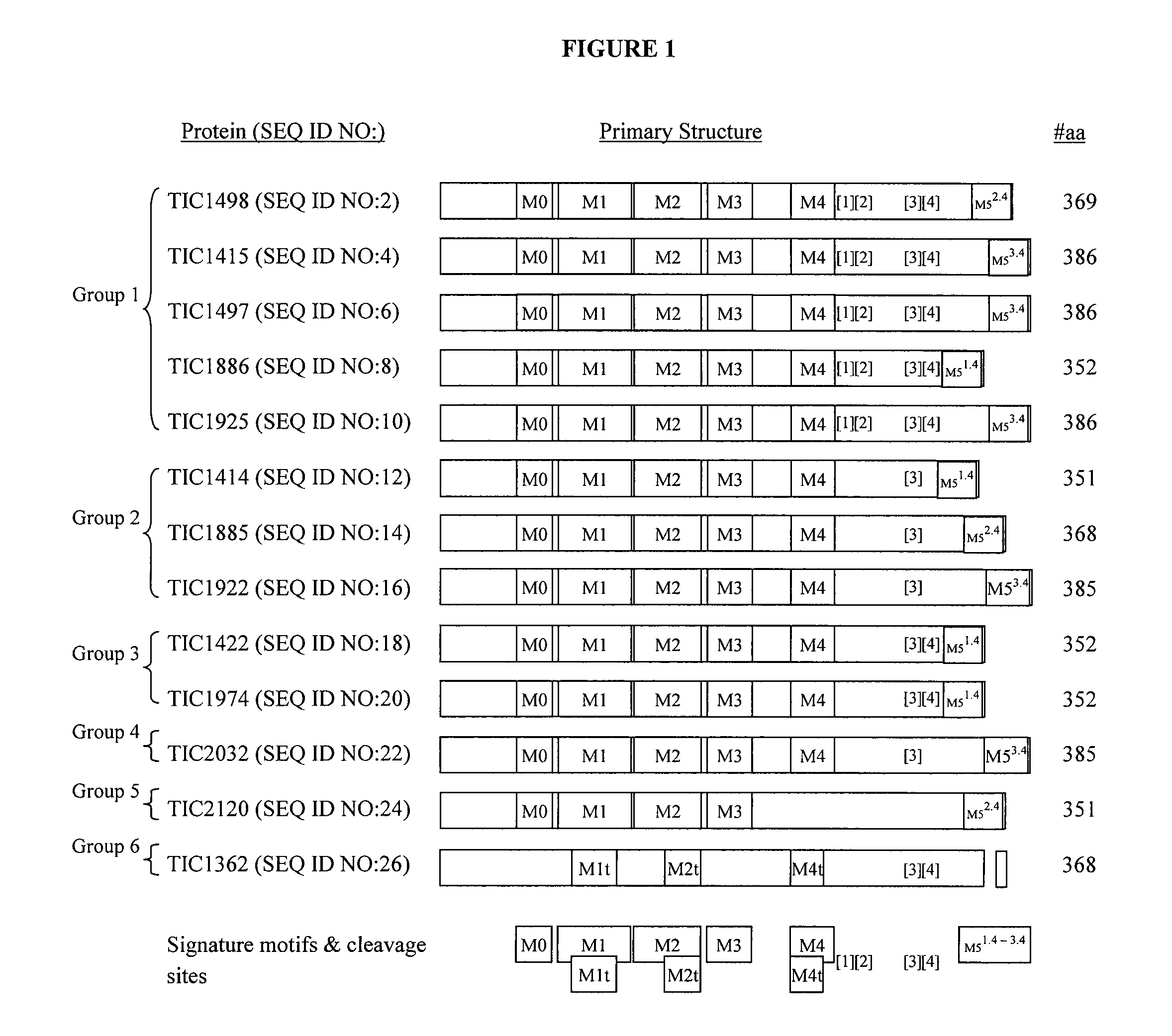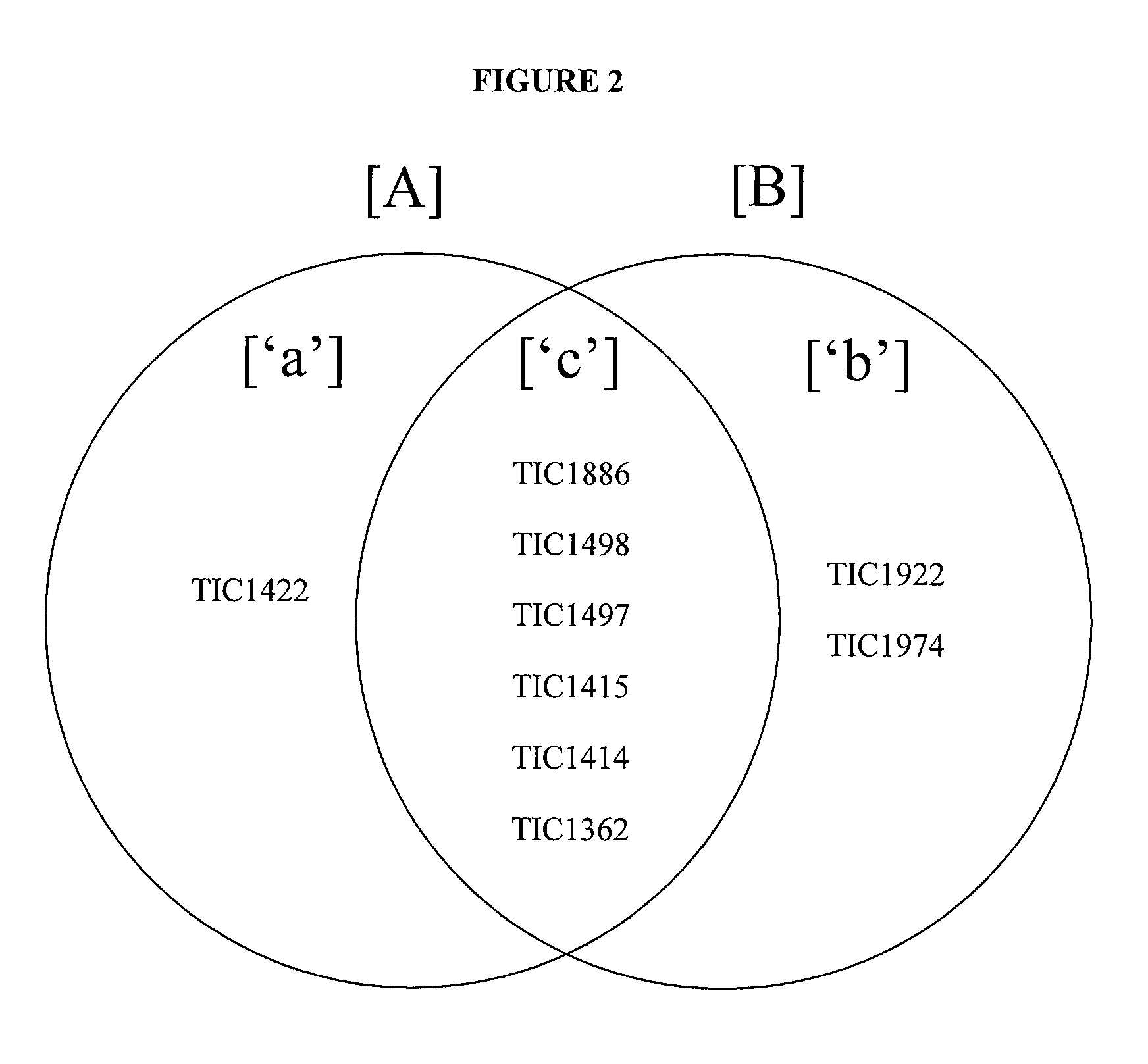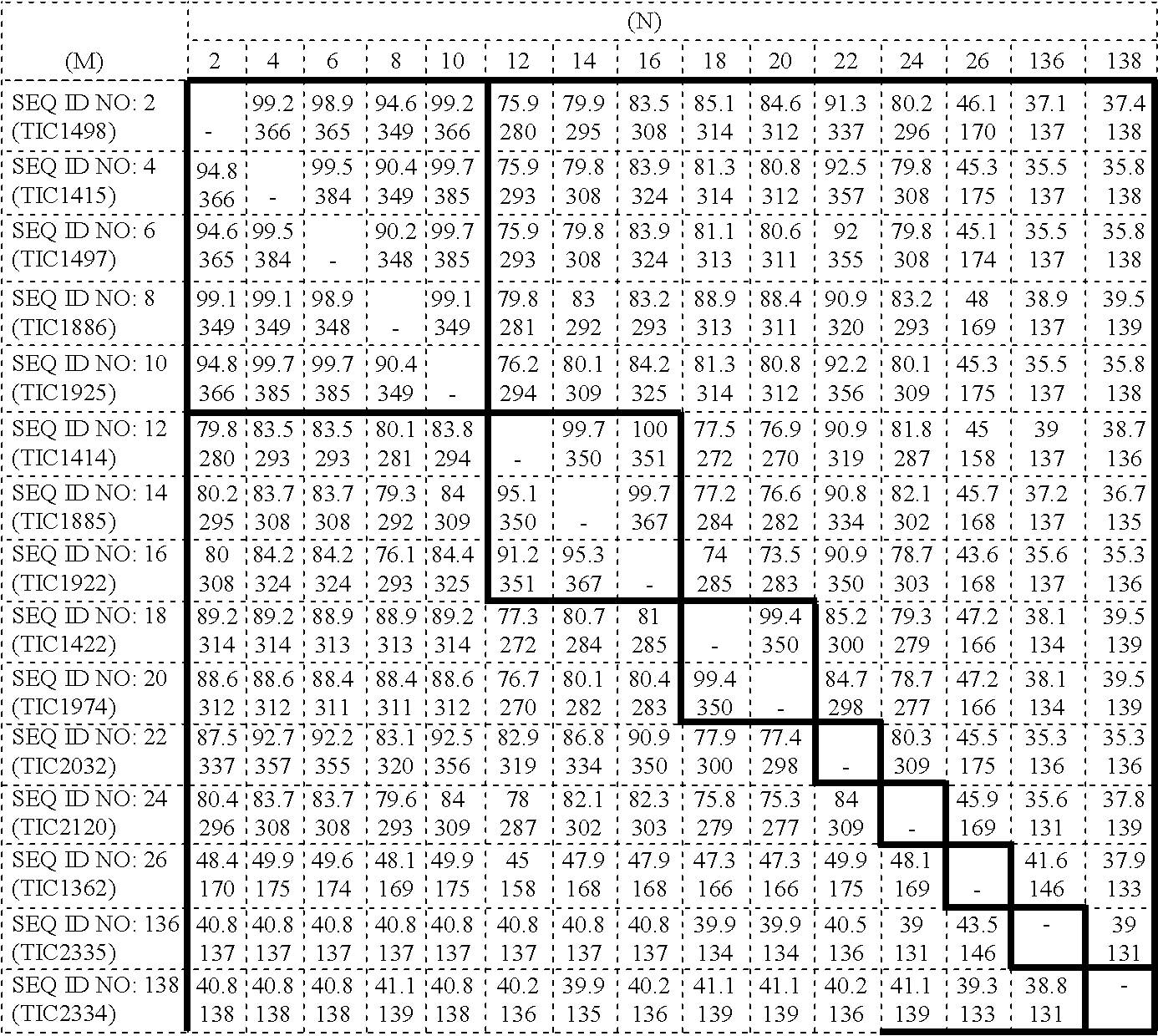Insect inhibitory toxin family active against hemipteran and/or lepidopteran insects
a toxin family and insect technology, applied in the field of insect inhibitory proteins, can solve the problems of broad-spectrum chemistries harming the environment, no bt proteins have been used in the commercial control of hemipteran pest species,
- Summary
- Abstract
- Description
- Claims
- Application Information
AI Technical Summary
Benefits of technology
Problems solved by technology
Method used
Image
Examples
example 1
Discovery of Insect Inhibitory Proteins
[0163]Various Bt strains exhibiting distinctive attributes, e.g. inferred toxicity, proteomic diversity, and morphological variations when compared to each other, were identified, and DNA was obtained from each such strain and prepared for DNA sequencing. DNA sequence information was generated for each such strain, raw sequence reads were processed, contigs were assembled from processed reads, open reading frames were identified, and deduced amino acid sequences were analyzed.
example 2
Cloning and Expressing Insect Inhibitory Proteins
[0164]This example illustrates the cloning of polynucleotide segments encoding insect inhibitory proteins, and insertion into and expression in recombinant host cells.
[0165]Nucleotide segments were obtained by amplification from corresponding genomic samples from which each open reading frame was identified in Example 1. Amplified nucleotide segments were inserted into a recombinant plasmid and transformed into an acrystalliferous Bt host cell or into an E. coli expression strain, and the resulting recombinant strain(s) were observed to express a recombinant protein.
[0166]Recombinant proteins exemplified herein were observed to exhibit insect inhibitory properties to a variety of pest species as described in Examples 3-13 below. Nucleotide sequences as set forth in SEQ ID NO:1, SEQ ID NO:3, SEQ ID NO:5, SEQ ID NO:7, SEQ ID NO:11, SEQ ID NO:15, SEQ ID NO:17, SEQ ID NO:19, SEQ ID NO:25, SEQ ID NO:135, and SEQ ID NO:137 were confirmed to...
example 3
Lepidopteran Activity of TIC1886
[0168]This example illustrates the Helicoverpa zea (Hz) activity exhibited by a sample from a recombinant strain expressing recombinant protein TIC1886 having deduced amino acid sequence of SEQ ID NO:8.
[0169]A diet of 16.5% (w / v) of “Multiple Species” diet (Southland Products, 201 Stuart Island Road, Lake Village, Ark. 71653) was prepared in a 14% (w / v) agar base (Serva #11393). The agar base was melted and blended with diet and purified water to volume (1.4% (w / v) agar). Diet suspension was dispensed into individual bioassay compartments.
[0170]A test sample of recombinant protein TIC1886 was prepared as described in example 2, and overlaid over 24 compartmentalized diet surfaces approximating about 2890 ug / mL per compartment. A buffer control sample was overlaid onto 96 compartmentalized diet surfaces. Together, 120 compartmentalized diet surfaces comprise the test set of this example prepared for Helicoverpa zea bioassay.
[0171]A single neonate larva...
PUM
| Property | Measurement | Unit |
|---|---|---|
| temperature | aaaaa | aaaaa |
| temperature | aaaaa | aaaaa |
| RH | aaaaa | aaaaa |
Abstract
Description
Claims
Application Information
 Login to View More
Login to View More - R&D
- Intellectual Property
- Life Sciences
- Materials
- Tech Scout
- Unparalleled Data Quality
- Higher Quality Content
- 60% Fewer Hallucinations
Browse by: Latest US Patents, China's latest patents, Technical Efficacy Thesaurus, Application Domain, Technology Topic, Popular Technical Reports.
© 2025 PatSnap. All rights reserved.Legal|Privacy policy|Modern Slavery Act Transparency Statement|Sitemap|About US| Contact US: help@patsnap.com



